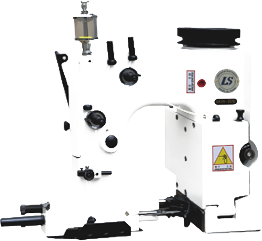Adjusting the Presser Foot on a Sewing Machine for Perfect Stitching
The Importance of the Foot on a Sewing Machine A Guide for Beginners
When it comes to sewing, the foot of a sewing machine plays a crucial role that shouldn't be overlooked. Often, beginners may focus solely on the machine's motor, threading, or fabric, yet the foot is a key component that affects not only the quality of the sewing but also the ease with which you can create your projects. Understanding the different types of machine feet and their functions can truly enhance your sewing experience.
A sewing machine foot is a small attachment that holds the fabric in place as you sew. There are several types of feet, each designed for specific tasks. The most common is the standard presser foot, which is used for general sewing projects. This foot works well for straight stitches and light to medium-weight fabrics. However, as a beginner, it's beneficial to explore other specialized feet that can elevate your sewing skills.
The Importance of the Foot on a Sewing Machine A Guide for Beginners
Another essential tool is the zipper foot, which allows for close sewing along zippers and other narrow edges. It features a unique design that lets you sew right next to the zipper coils. This foot is instrumental in projects such as bags, clothing, and home decor where zippers are required, giving your work a professional finish.
foot on a sewing machine

For decorative sewing, the appliqué foot is a valuable addition to your toolbox. This foot has a wider opening, allowing you to see your stitching clearly while working on intricate designs. It’s particularly advantageous when applying embellishments or additional layers to your fabric, as you can easily maneuver around curves, corners, and various shapes.
Additionally, there are feet specifically designed for buttonholes and blind hemming. The buttonhole foot has precise measurements to ensure that the buttonholes are consistent in size, while the blind hem foot makes it easier to create invisible hems, providing a polished look to your garments.
Moreover, many sewing machines come with adjustable feet that can be switched out quickly and easily. As you gain more experience, you might want to invest in specialty feet that cater to specific techniques like quilting or free-motion sewing. Different feet can inspire creativity and open doors to various sewing avenues.
In conclusion, the foot on a sewing machine is not just a simple attachment; it is an integral aspect of the sewing process. From ensuring that fabric feeds evenly to enabling intricate designs, understanding and utilizing the various types of sewing machine feet can significantly enhance the quality of your sewing projects. As you embark on your sewing journey, take the time to experiment with different feet and discover how they can transform your creations. With practice and the right tools, you’ll soon find yourself mastering sewing techniques you never thought possible.
-
Boost Production Efficiency with a Pattern Sewing MachineNewsAug.29,2025
-
Industrial Excellence with the Best Heavy Duty Sewing MachineNewsAug.29,2025
-
Precision and Power with the Best Pattern Sewing MachineNewsAug.29,2025
-
Reliable Bulk Packaging Starts With the Right FIBC Sewing MachineNewsAug.29,2025
-
Advanced Packaging Solutions: Elevate Productivity with Jumbo Bag Sewing Machine and Industrial Stitching EquipmentNewsAug.29,2025
-
High-Performance Solutions for Bulk Packaging: FIBC Sewing Machine and MoreNewsAug.29,2025
-
Maximize Efficiency with an Industrial Cylinder Arm Sewing MachineNewsAug.28,2025


























